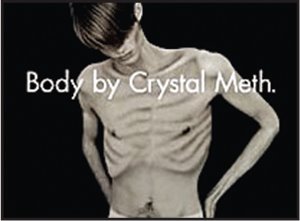 San Francisco's gay community may be seeing a significant drop in crystal methamphetamine use, according to research conducted by the nonprofit STOP AIDS Project and analyzed by the city's Department of Public Health.
San Francisco's gay community may be seeing a significant drop in crystal methamphetamine use, according to research conducted by the nonprofit STOP AIDS Project and analyzed by the city's Department of Public Health.The Stop Aids Project conducted 4,197 individual surveys of gay and bisexual men between July 2003 and June 2005, project spokesman Jason Riggs said today. That data indicates a 40 percent drop in methamphetamine use within that time period, according to Riggs.
In a news release, Riggs reported that "In late 2003, 18 percent of gay and bisexual men in San Francisco reported they had used crystal meth in the last six months. In the first half of 2005, 10 percent had reported using crystal meth in the last 6 months," a 40 percent drop over two years.
Those data are based on a series of surveys conducted of individuals by STOP AIDS Project volunteers at social and community events and on the street, Riggs said.
Many subjects may have taken the anonymous survey multiple times, but those who took it within the prior six months are asked to indicate that, Riggs said.
"We've been conducting the same kind of survey since the early '90s," Riggs said. "The questions have stayed the same, so we have really good trend analysis."
H. Fisher Raymond and Willi McFarland of the Department of Public Health's AIDS office indicated that, because the sample group is hard to identify, the data might be biased. However, they concurred with Riggs that the surveys are a good trend indicator.
"We know that (the survey) has limitations and possible biases, but it's one of the few pieces of information we've been collecting for so many years," McFarland said.
Raymond indicated that, although more than 4,000 surveys were conducted, the population of the sample group is probably around 800 to 1,300 people.
The STOP AIDS Project's findings have been taken with a grain of salt by some.
McFarland mentioned Christopher Carrington, an assistant professor of sociology at San Francisco State University, who wondered in a Bay Area Reporter article whether the study indicated a real drop in use, or a reluctance to admit to using the drug due to an increased stigma associated with it.

Which could mean, McFarland continued, that "you're not changing the behavior, you're changing people's willingness to discuss the behavior, which could be counterproductive."
But Riggs said he doesn't think a stigma associated with methamphetamine use would be a bad thing.
"I don't think we need to shame people who are addicts," he said. "But we need to make sure people are informed. Nobody wants to be a crack whore, so it is stigmatizing because of what addicts become within the community."
The STOP AIDS Project announced that the recent data appear to buck the national trend of increased use, a trend that is corroborated by Gaetano Vaccaro, manager of clinical research at the Los Angeles Gay and Lesbian Center.
"We're seeing a steady increase in both crystal meth availability and use here in L.A.," Vaccaro said.
He expressed doubt about the implications of the San Francisco surveys.
"In my opinion, that is a very sharp decline that is hard to validate. Before we would believe that that is true, we would need to see it validated by an empirical study. That's a lot and it doesn't represent what we're seeing here," he said.
Vaccaro cited data documented by the Los Angeles Gay and Lesbian Center's HIV counseling and testing program, which indicated an increase in the numbers of gay and bisexual men who use methamphetamine and test positive for HIV.
But Vaccaro said he was hopeful that STOP AIDS' data were an early indicator of a trend shift within the gay and bisexual male community.
"We are encouraged by their findings because it means the kind of programs we're working on might make a significant difference," he said.
from CBS5.com
No comments:
Post a Comment